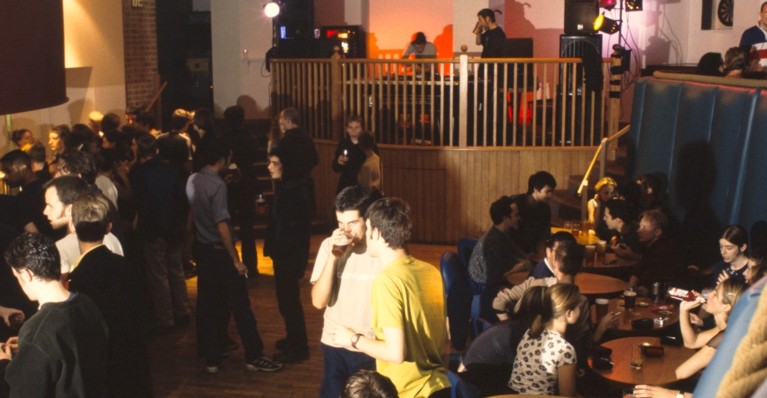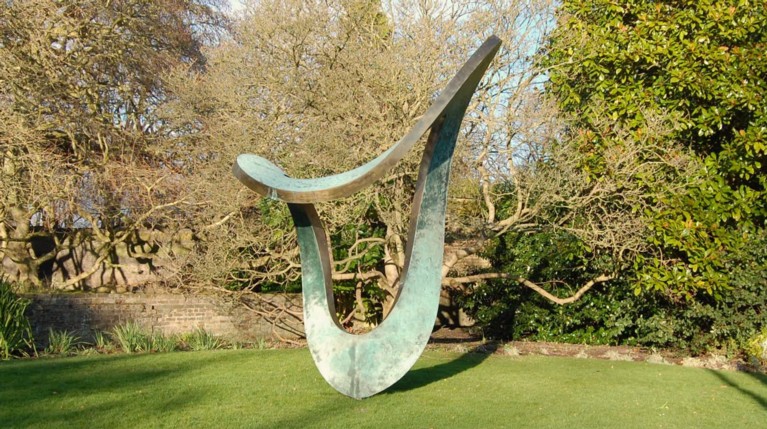Blog
5 February 2025
J is for … JCR

The phrase ‘Junior Common Room’ (JCR for short) once referred to the undergraduate student body, but this usage is now archaic. The term was also applied to the room that incorporated the students’ bar, a facility that opened in 1955. The college authorities had agreed to the setting up of a JCR bar with some trepidation. Strict rules of conduct forbade female guests, the serving of spirits, and the removal of alcoholic drinks from the room. Opening times were also restrictive. In the event, the fears proved groundless, not least because the JCR’s inconvenient location, tucked away in the attic above the Old Library, prevented it from being well-patronised. When South Court was being designed in the mid-1960s, the architect was asked to incorporate a new JCR on the ground floor, where it would be easily accessible. Predictably, perhaps, it proved to be all too accessible, and repelling ‘barbarian invaders from other Colleges’ was a recurring problem. Gatecrashing apart, incidents of anti-social behaviour were rare, but an exception was the revelry following a certain sporting club’s annual dinner in April 1987, that left the JCR in a sorry state. The bar underwent a dazzling revamp in 1996 (pictured), this being the last hurrah of the mastership of Lord St.John of Fawsley, formerly the politician Norman St.John-Stevas. With the Master’s active encouragement and guidance, the JCR was transformed from what he called a ‘Grottsville’ drinking den into an attractive and ‘uninebriated social centre for the benefit of all’. The room continues to fulfil this wholesome function, having recently metamorphosed into Fiona’s café and social hub. The new student bar is housed within Young’s Court, but it is no longer referred to as the JCR, as it welcomes not only undergraduates, but also grads, Fellows, old members and staff.
J is for … Jester

In 1979, through the good offices of the late Dr Ronald Gray, Fellow of Emmanuel, the college secured the loan of an important open-air artwork. The piece in question was Henry Moore’s moving, but unsettling, Warrior with Shield. Its recall by the Henry Moore Foundation in 1987, after the artist’s death, left such a gap (literally and metaphorically) that the college was keen to acquire another sculpture as soon as possible. These hopes did not come to fruition, however, until the advent of Lord St.John of Fawsley, whose term as Master began in 1991. With a longstanding interest in the arts, Lord St.John was at that time Chairman of the Royal Fine Art Commission. It was thanks to his fund-raising efforts that the college secured donations from two particularly generous benefactors, enabling it to acquire a stunning sculpture by the acclaimed artist Wendy Taylor. Jester was installed at Emmanuel in 1994, on the same spot that Warrior had occupied. Unfortunately, an exceptionally wet spring had left the Paddock waterlogged and the first attempt to set up the sculpture had to be abandoned. As Lord St John put it: ‘Poor Wendy had to remove her half-ton bauble as though it were a garden gnome…’. The second endeavour proved successful. The Master described Jester as a ‘green bronze with a gilded edge and being literate as well as naturalistic fits in well with its collegiate and pastoral setting’. He hoped, moreover, that it would demonstrate to ‘students and others the importance, beauty and relevance of modern art’. This marvellous bronze is – or creates the illusion of being – miraculously balanced on a tiny point. With its witty evocation of Classical comedy masks, Jester is a beloved and much-photographed feature of the college grounds.
Amanda Goode, College Archivist